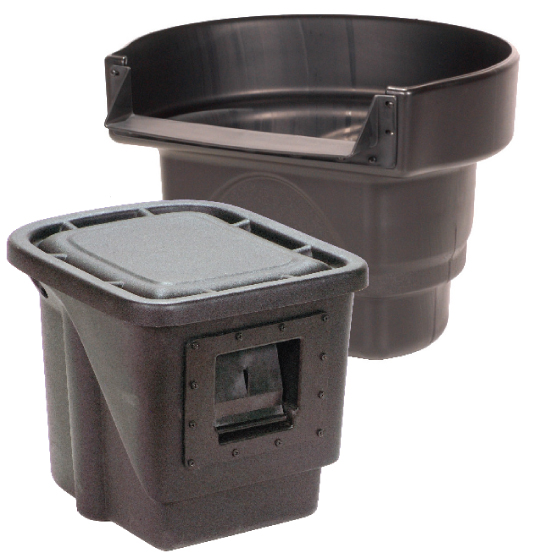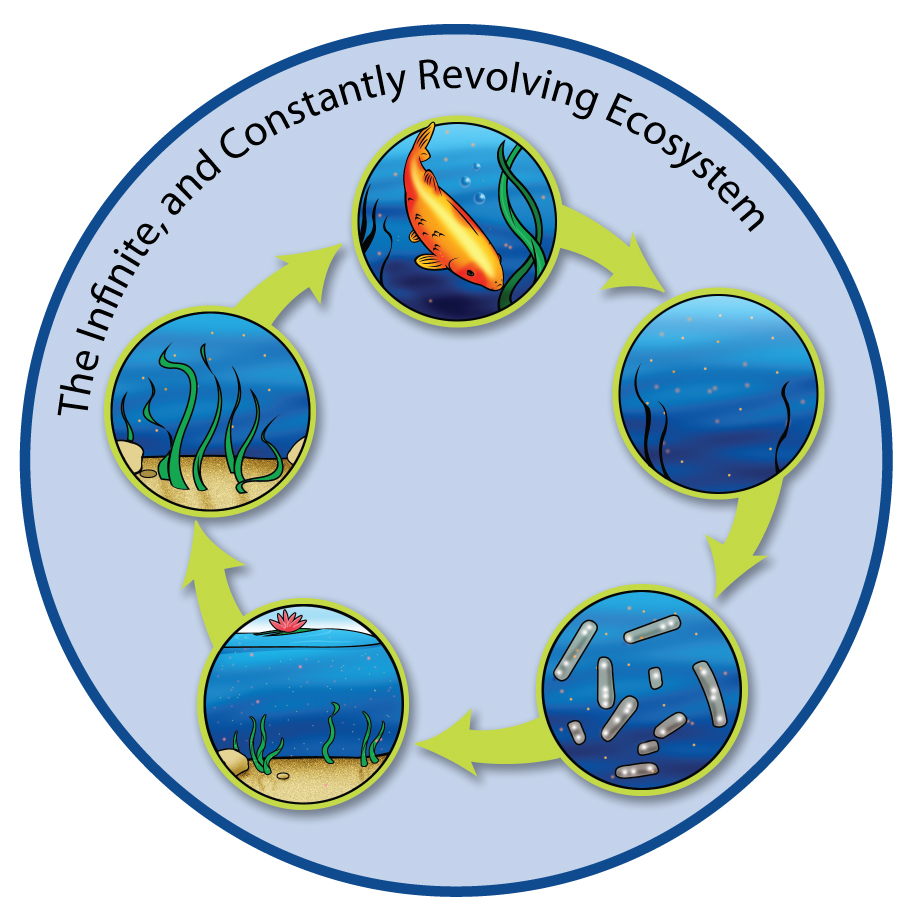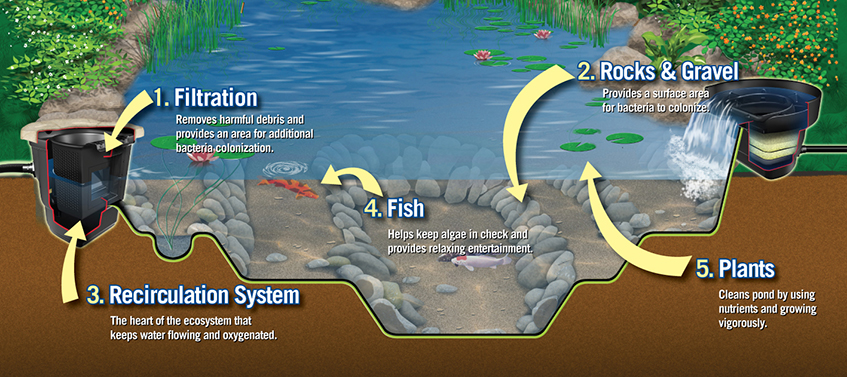Let’s Talk About the Five Elements of the Healthy Ecosystem
1. Filtration System
 Includes the use of both a biological and a mechanical filter.
Includes the use of both a biological and a mechanical filter.
- A BioFalls® (biological filter) provides surface area for beneficial bacteria to colonize and remove excess nutrients from the water.
- A Skimmer (mechanical filter) will not only pre-filter the water and house the pump; it will also skim debris from the water’s surface to prevent the accumulation of organic materials on the pond floor.
2. Rocks and Gravel
Rocks and gravel will not only protect pond liners from UV light degradation, but they will also provide tremendous surface area for beneficial bacteria to break down excess nutrients in the water and dissolved organic debris on the pond floor.
3. Recirculation System
This is really just a fancy way of saying “pumps and plumbing.” The proper size pump and pipe diameter are extremely important for the aesthetics of a water feature. More importantly, an efficient circulation system will keep the water moving and provide the necessary oxygen levels for healthy fish and plants.
4. Fish
Fish are an integral part of any ecosystem. Unfortunately, fish are often seen as high maintenance. Contrary to popular belief, fish actually reduce pond maintenance as they graze on string algae and bottom feed from the pond floor. They also make very enjoyable pets, providing hours of natural entertainment.
5. Aquatic Plants
Mother Nature’s true filters, plants are great for adding character to a pond by providing color and texture, but from a filtration perspective, they’re second to none. Thriving from the excess nutrients in a pond and depriving algae of its food source, the aquatic plants in a water garden, given proper coverage, are critical for the overall health of the ecosystem.
How Do All These Elements Work Together?
 In order to have a successful water gardening experience, you must think systematically and understand the critical role of each ingredient in Mother Nature’s recipe. The fish nibble on the plant life (and everything else), including the algae. In turn, the fish produce waste that, along with other forms of natural debris, fall to the pond’s bottom. Debris is broken down by the aerobic bacteria and the other microorganisms colonized on the rocks and gravel all over the pond bottom. Once broken down, these substances are absorbed as nutrition by the plants. The plants grow and are once again nibbled on by the fish … ’round and ’round it goes, infinitely. So, in a naturally balanced water garden, you have this never-ending aquatic circle of life where all parts complement the others, and play critical roles in the pond’s natural born harmony.
In order to have a successful water gardening experience, you must think systematically and understand the critical role of each ingredient in Mother Nature’s recipe. The fish nibble on the plant life (and everything else), including the algae. In turn, the fish produce waste that, along with other forms of natural debris, fall to the pond’s bottom. Debris is broken down by the aerobic bacteria and the other microorganisms colonized on the rocks and gravel all over the pond bottom. Once broken down, these substances are absorbed as nutrition by the plants. The plants grow and are once again nibbled on by the fish … ’round and ’round it goes, infinitely. So, in a naturally balanced water garden, you have this never-ending aquatic circle of life where all parts complement the others, and play critical roles in the pond’s natural born harmony.
Having all these things in place makes all the difference in the health and success of your water garden. Use them and work with Mother Nature, not against her, for a chemical-free wonderland of water! The truth is that most people opt for the ecosystem way of water gardening because it’s easier and it just makes sense. A low-maintenance ecosystem pond provides you with more free time to enjoy friends and family … while gathered around your pond, of course!


